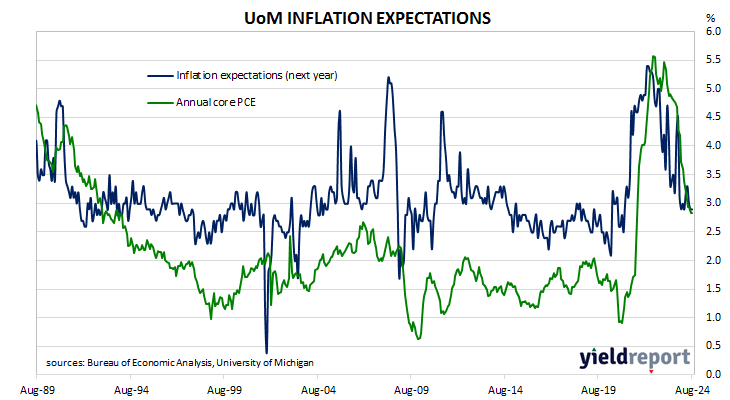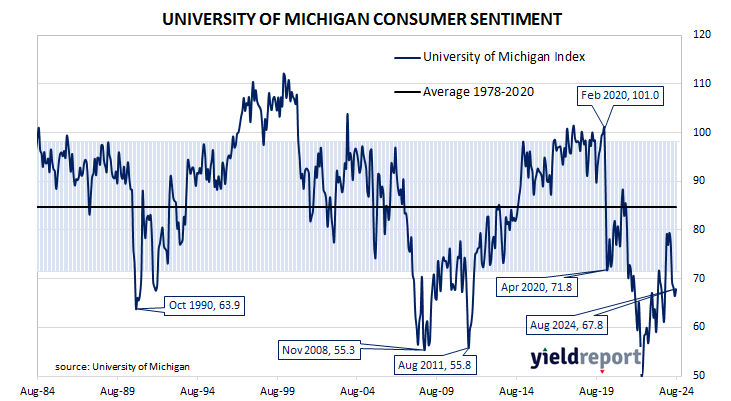Summary: University of Michigan consumer confidence index rises in August, in line with expectations; views of present conditions deteriorate, future conditions improve; election developments influence future expectations, unlikely to alter current assessments; US Treasury yields fall; rate-cut expectations firm; inflation expectations unchanged.
US consumer confidence started 2020 at an elevated level but, after a few months, surveys began to reflect a growing unease with the global spread of COVID-19 and its reach into the US. Household confidence plunged in April 2020 and then recovered in a haphazard fashion, generally fluctuating at below-average levels according to the University of Michigan. The University’s measure of confidence had recovered back to the long-term average by April 2021 but then it plunged again in the September quarter and remained at historically low levels through 2022 and 2023.
The latest survey conducted by the University indicates confidence among US households has improved slightly in August. The preliminary reading of the Index of Consumer Sentiment registered 67.8, essentially in line with expectations but up from July’s final figure of 66.4.
Consumers’ views of current conditions deteriorated while their views of future conditions improved relative to those held at the time of the July survey. The Current Economic Conditions Index decreased from 62.7 to 60.9 while the Index of Consumer Expectations Index increased from 68.8 to 72.1.
“Overall, expectations strengthened for both personal finances and the five-year economic outlook, which reached its highest reading in four months, consistent with the fact that election developments can influence future expectations but are unlikely to alter current assessments,” said the University’s Surveys of Consumers Director Joanne Hsu.
US Treasury bond yields declined moderately on the day. By the close of business, the 2-year Treasury yield had shed 4bps to 4.05%, the 10-year yield had lost 2bps to 3.89% while the 30-year yield finished 3bps lower at 4.14%.
In terms of US Fed policy, expectations of a lower federal funds rate in the next 12 months firmed slightly, with around seven 25bp cuts currently factored in. At the close of business, contracts implied the effective federal funds rate would average 5.195% in September, 4.785% in November and 4.575% in December. July 2025 contracts implied 3.56%, 177bps less than the current rate.
US consumer inflation expectations remained unchanged. Year-ahead expectations remained at 2.9%, as did consumers’ long-term expectations at 3.0%.

It was once thought less-confident households are generally inclined to spend less and save more; some decline in household spending could be expected to follow. However, recent research suggests the correlation between household confidence and retail spending is quite weak.


